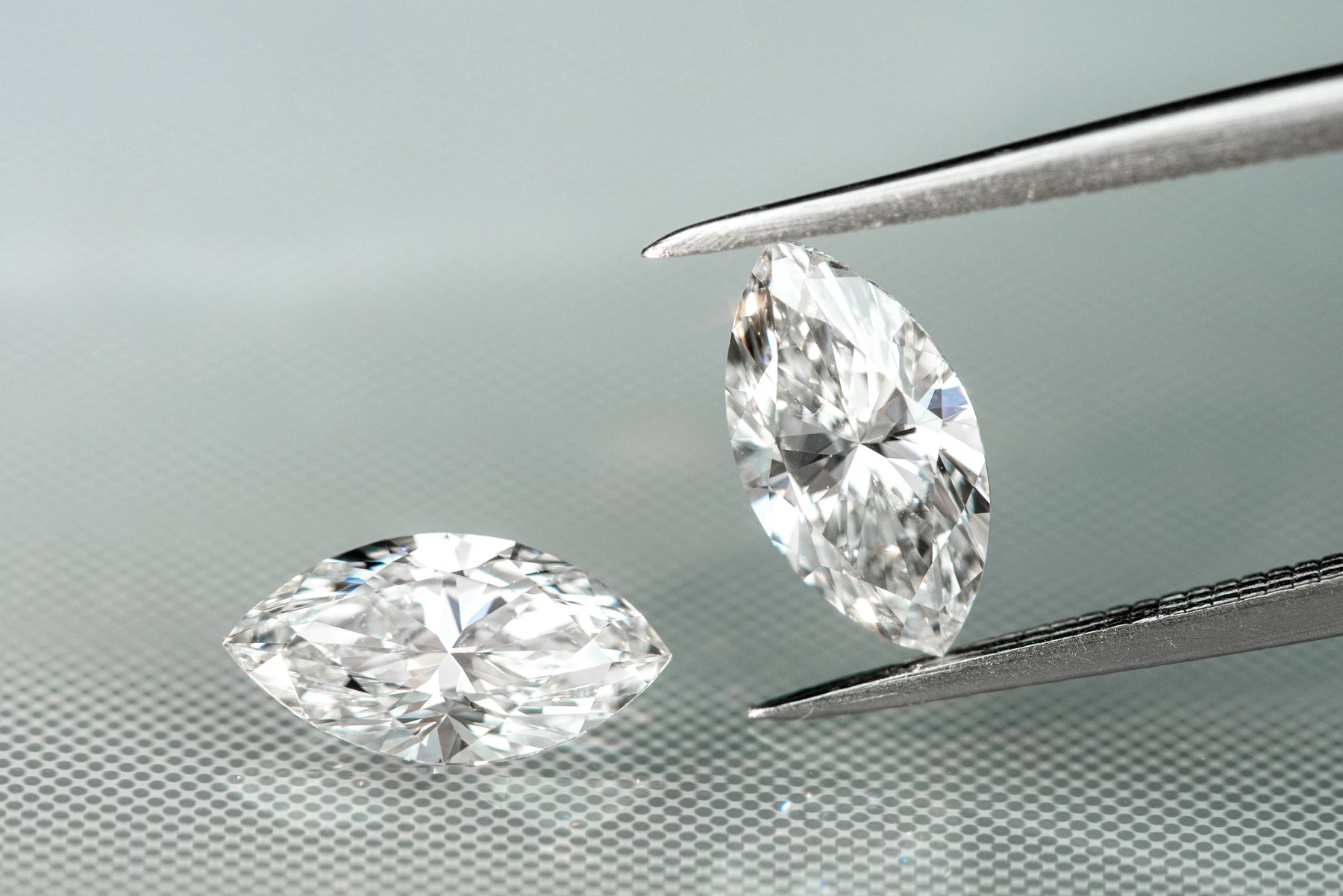
Diamond Carat Guide
Carat is usually one of the first things people look for when shopping for diamonds. Yet if you were to ask them what carat actually meant, they might struggle to define the term.
A diamond’s carat refers to the weight of the diamond. The larger the carat, the more the stone is usually worth.
Our expert diamond carat guide explains how this measurement is one of the most important factors in the 4Cs – the universal grading scale that’s used to determine the value of both natural and lab grown diamonds.
- Diamond carat is one of the most important factors in the 4Cs grading scale
- The carat of a diamond refers to its weight, not its size
- The larger the carat, the more a diamond is usually worth
Diamond carat explained
Carat – often written as ‘ct’ - is a measure of the diamond’s weight, not its size. A carat of diamond weighs 0.2 grams or 100 points on the diamond carat chart. A quarter carat diamond is, therefore, 0.05 grams or 25 points.
A larger weight of diamond will usually mean that it has a bigger diameter, too. That’s why a larger carat can result in a more impressive and desirable looking stone. And also why many people associate carat with size.
When it comes to diamonds – size and weight certainly matters. The carat of a diamond is a fundamental aspect of establishing a stone’s value.
“Hundreds of years ago, people relied on the seed of a carob tree to determine the weight of diamonds, and this is where the name ‘carat’ is derived from. The dried seeds of the carob tree had a remarkably consistent weight and were used by traders as a base unit of weight for gemstones and diamonds. It was only in the early 20th Century that a carat became a precise measure of a diamond’s weight.” Sophie Milner, Buyer, Created Brilliance

Diamond carat size chart
The diamond carat size chart below outlines an ideal diameter, based on different carat weights. The dimensions of the diamond can differ slightly from this chart, due to other factors such as the quality of its cut.
Because they share the exact same characteristics, both natural and lab grown diamonds are the same weight. Despite being identical to natural diamonds, lab grown diamonds are ethically sourced and are typically 40-50% less expensive than natural stones.
This means you can usually afford a larger carat lab grown diamond than if you were shopping for natural diamonds.

How much does diamond carat impact cost?
A diamond’s carat plays a huge part in determining its value. After all, it is essentially a measure of how much of this dazzling and precious gemstone you are investing in.
That being said, it’s really important to recognise there are other factors that decide how brilliant a diamond is and how much it is worth. These include other key pillars of the 4Cs grading scale – clarity, cut and colour.
The world’s most expensive diamonds have a high carat, but often combine an exceptional cut, flawless clarity and a colourless rating. It’s also worth mentioning that rarity of colour can trump all other factors – including carat – when it comes to value.
Although carat is an important factor, it is the combination of these attributes which create the most dazzling of diamonds.
What is meant by the term magic sizes?
You may have heard of the term “magic sizes”, which refers to key diamond carat weights such as 0.25ct, 0.50ct, 1ct, 2ct etc.
Although there may be a miniscule difference visually between a 0.99ct diamond and a 1ct diamond, the price difference can be significant.
That’s simply because a 1ct diamond sounds more impressive and is more desirable, so therefore, it can attract a higher price.
What diamond carat should you buy for an engagement ring?
If you’re looking for a special piece of jewellery such as an engagement ring, the diamond carat you opt for will be based on your budget and preferences.
With lab grown diamonds you can buy a higher carat weight diamond for less, compared to natural diamonds. This means you can buy an engagement ring with a bigger diamond, for a better, more affordable price.
Shop our beautiful range of lab grown diamond engagement rings.
Summary
A diamond’s carat is one of the most important factors in the 4Cs grading scale, which decides a diamond’s value. The larger the carat is, the more a stone weighs and the bigger its dimensions usually are. When buying diamond jewellery, you should also consider the other pillars of the 4Cs scale – the cut, clarity and colour of the diamond.
